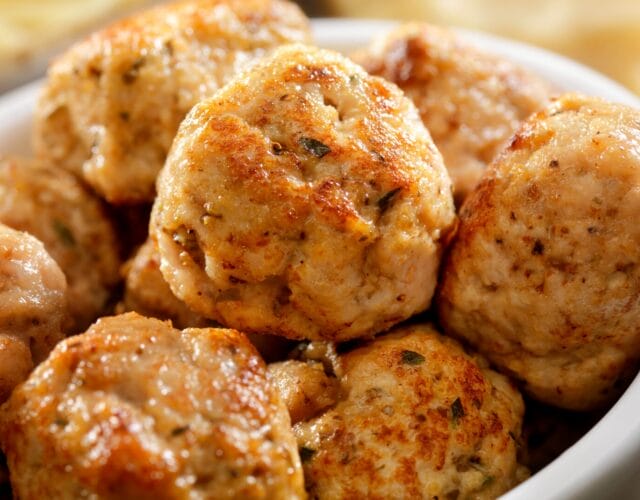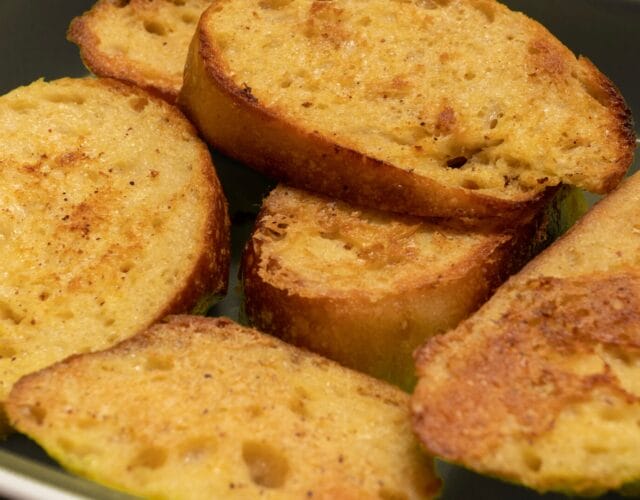As parents, most of us have had the experience of our child complaining of some mysterious leg or arm pain at different times. We typically blow it off and tell them it will go away, chalking it up to “growing pains”. I remember one Friday night our son was complaining of wrist pain and we told him “it will be fine, just give it some time”. By Monday he was still complaining and we took him in for an x-ray and low and behold—he had a broken wrist. We nominated ourselves for the Worst Parents of the Year award, particularly given the fact that mom is a pediatrician and dad is an orthopaedic surgeon. In our defense, kids always seem to be complaining of some weird leg pain or clicking. So how can you tell? What complaints should we worry about? Hopefully this post can help.
Studies have shown that nearly 40% of children suffer from growing pains at some point in their lives. There are many current theories as to what causes these pains but we still have a poor understanding of the underlying issue. As we delve into a few of the theories behind growing pains, we can also explore some of the treatments prescribed through the years.
Unfortunately, many historical treatments involve medications (acetaminophen or ibuprofen) that parents aren’t always comfortable giving to children. But what if there was a better way to treat your child’s pain safely and naturally?
We’ve put together our top tips to help your children combat growing pains. Keep reading to discover the holistic options you’ve been looking for!
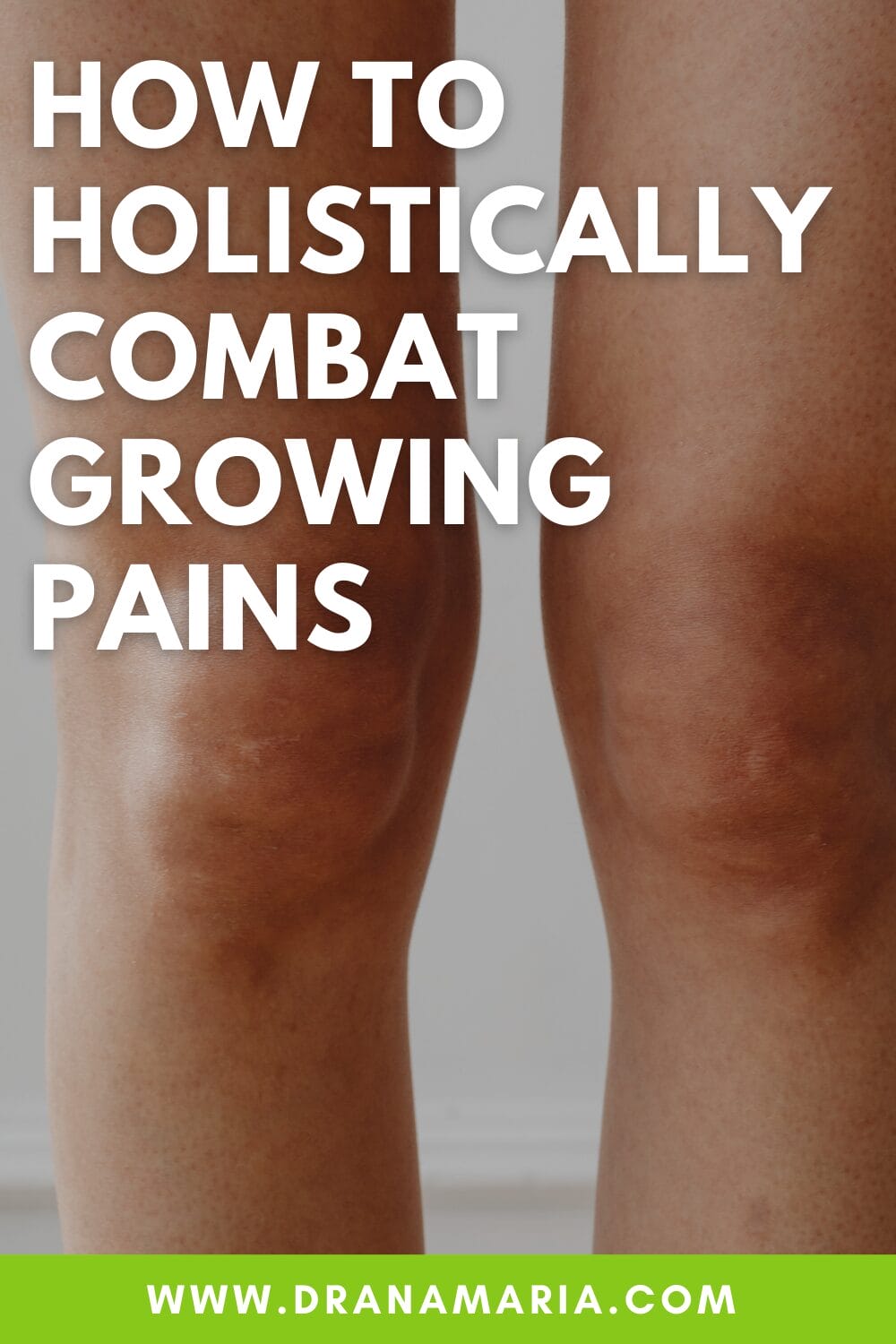
What Are Growing Pains?
Our guide is going to walk you through many holistic growing pain solutions for your child. Before we go any further, though, we need to address the question: what are growing pains?
Growing pains were first described by a French physician back in 1823 as recurrent leg pain syndrome of early childhood.
Growing pains are intermittent pains that usually occur once or twice per week late in the afternoon or during the night. There are pain-free days in between and when the pain does occur, it is resolved by the following morning. The pain does not involve joints and is mostly located in the shins, calves, and thighs, and almost always affects both sides. There is no redness on the overlying skin, and no inflammation apparent. Occasionally, the pain may involve the arms but this is much less frequent. The pain itself may be variable, sometimes feeling like a major muscle cramp, intense throbbing, or even painful to the touch.
While not limited to this range, most children who get these pains will get them between 3-14 years of age, with age 4-6 being the most common. As children get older the pains become less frequent until they resolve completely.
What Causes Growing Pains In Children?

Previously, we mentioned how these pains affect more than one out of every three children. But since growing pains aren’t universal, what actually causes them?
Interestingly, the exact answer has not been determined. But this hasn’t kept scientists from putting forward a number of theories since the 1800s.
Ironically, it turns out growing pains are probably NOT from growth spurts of childhood. Studies have shown no correlation between the presence of growing pains and periods of accelerated growth in kids. In fact, a push has been made to rename the problem to “recurrent limb pains of childhood” however “growing pains” remains the most commonly used.
Although we don’t know the exact mechanism, some connections have been made and we will review those here.
1.Vitamin D Deficiency and Reduced Bone Strength
A number of studies have shown a correlation between low vitamin D levels and growing pains. A study out of Korea showed that growing pains were more common in winter than summer, reinforcing the vitamin D theory. Supplementing with vitamin D resolved the pain in the majority of the kids treated in the studies.
Other studies show children with growing pains have lower bone density in their shins than kids without growing pains. This would also explain why kids tend to have growing pains more commonly after days of heavy physical activity. If the bones are weaker, they are not able to keep up with the demands of the activity (running, jumping, hopping, skipping) and pain develops.
2. Lower Pain Threshold
Several studies have shown that kids with growing pains have much lower pain thresholds than their pain free counterparts. These tests are done by pushing on multiple test areas with pressure to see if children complain of pain. Children with growing pains complained of more pain in almost all test areas than kids without.
3. Leg or Foot Shape
A number of studies have looked at the shape of kids’ legs and feet as a source of growing pains. A few studies have shown a correlation with flatfeet or hyperpronation, but others have shown no connection. Those studies also attempted orthotics and shoe inserts to improve growing pains with mixed results. Another study looked at knock-knees (genu valgum) as a source of pain but were unable to verify this.
Bottom line is some kids may benefit from a shoe insert or orthotic but this would be on a case by case basis.
4. Loss of Blood Flow
Loss of blood flow to bones was investigated since there has been some correlation made with migraines (migraines result from blood flow interruption). Those studies showed no change in the blood flow to the bones of the legs and has been mostly dismissed as a theory.
5. Psychological Abnormalities
Some early studies from the 1950s found children suffering from growing pains showed irritability, nervousness, fear of the dark, nightmares, bedwetting, tics, and an overreaction to pain. Other studies have shown higher levels of anxiety in both children suffering from growing pains and their mothers. The problem with these studies is the cause-effect issue: are the kids(and moms) anxious because they have growing pains, or did they develop growing pains related to their anxiety. Difficult to know.
6. Breastfeeding and Birth Issues
If you follow my blog or Instagram, you know I have been preaching for years that childhood illness starts in the womb. A study revealed that preterm birth, low Apgar score, low birth length or weight, and lower head circumference were positively correlated with the development of growing pains in childhood.
The same researcher also found that breastfeeding beyond 40 days of life reduced the risk of developing growing pains—yet another win for breastfeeding!
7. Other Stuff
Lots of other factors have been studied including genetic risks, melatonin abnormalities, lead and zinc issues, and omega-3s, all showing inconclusive evidence.
Treating Growing Pains
Although we don’t understand the exact underlying issue causing growing pains, there are a number of options to treat the symptoms. As you know, my preference is to avoid medication when possible. Use of antiinflammatories or even tylenol carries risk of complications and so we always need to consider the risk-benefit ratio. The solutions below will help you avoid toxicity and give your kids relief.
Massage Sore Areas

This may be one of the best and easiest solutions out there: massaging the affected limbs!
If your own child is experiencing these pains, you should gently massage their legs. This can offer soothing physical relief when they are experiencing major physical pain.
Of course, there is a psychological element to the pain because children don’t know what it is or why it is happening to them. Holding or otherwise cuddling your child before, after, or during a massage may help them feel better and calm anxiety.
Using Vitamin D
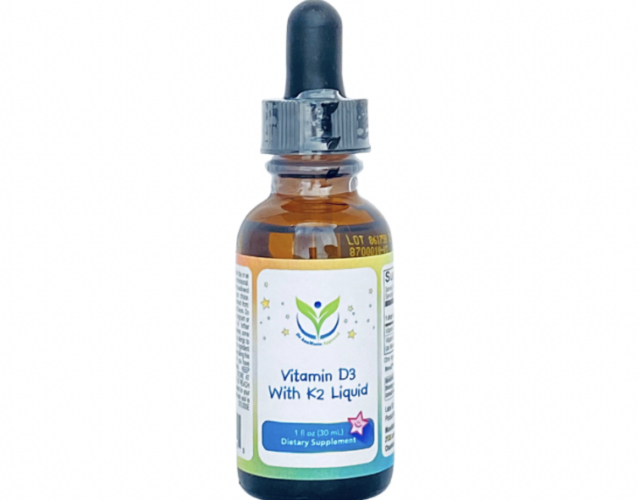
Given the association between vitamin D deficiency and growing pains, this one’s a no-brainer. Vitamin D is great for adults as well as children. It offers many benefits, including promoting good bone health. And this vitamin also helps you to ease the pains of growing children.
The easiest way for your child to get additional Vitamin D is to spend more time outside in the sun. If that is not an option for you, I would consider vitamin D supplementation.
Overall, regular Vitamin D intake can help with these pains, all while offering your child many other great benefits.
Treat With Heat
To a child, these pains can sometimes feel “hot” due to the intense throbbing sensation. Despite that, other forms of heat can be an effective treatment for this specialized pain.
Some parents rely on a hot pad to place on whichever parts of the body that are experiencing pain. You can buy such pads over-the-counter, though industrious parents can make their own with a combination of either cloth bags or tube socks filled with uncooked rice and sewn shut. Either way, you have a pad that you can microwave to a hot (but not too hot) temperature.
The heated pad works well to treat pain whenever there is a flare-up. And it is particularly effective in helping children get to sleep at night. Just don’t forget to remove the pad after they nod off!
Stretching Limbs
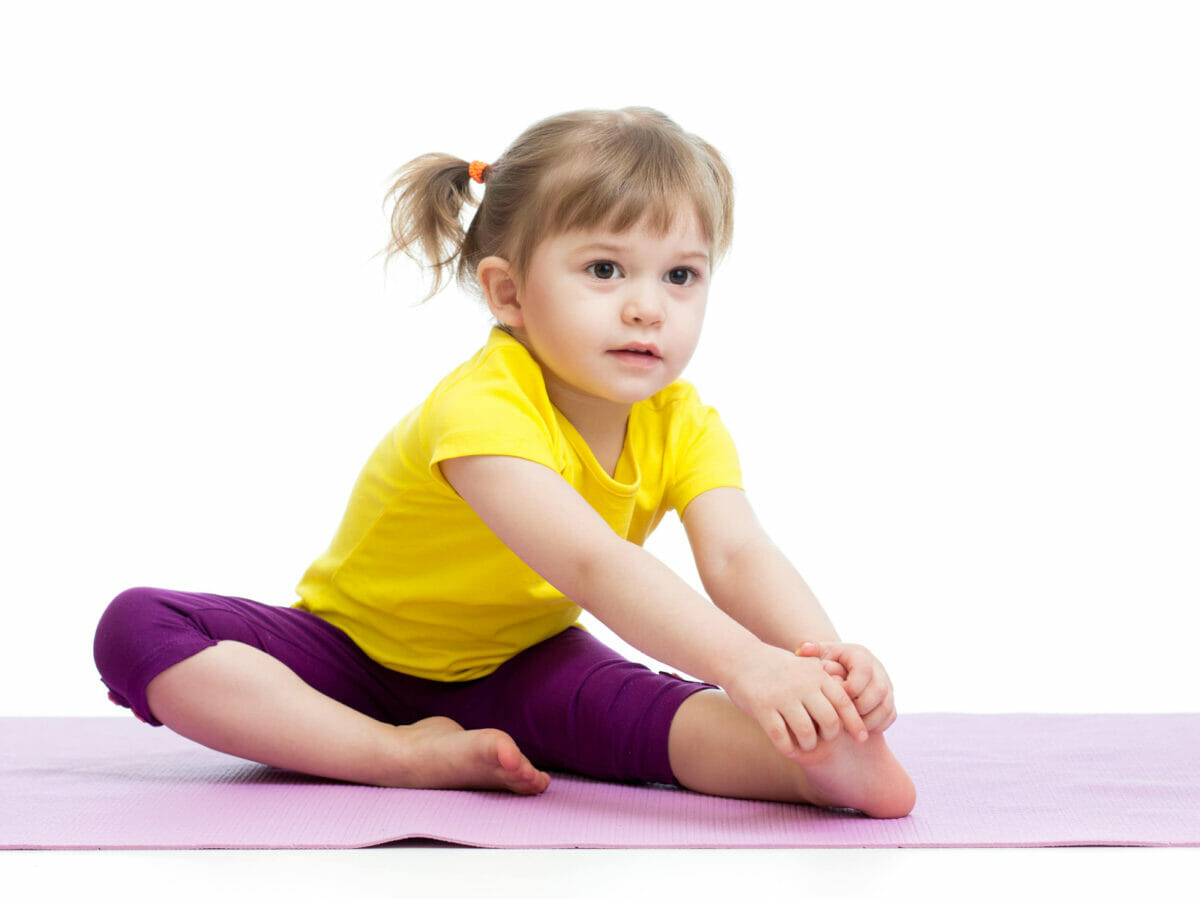
Children may be interested in ways they can treat their own pain, especially as they get a bit older. And one of the more effective ways to treat this pain is with stretching exercises.
While most of the tips in our guide are meant to treat pain as it occurs, your children can stretch limbs at any point during the day. While stretching has many other benefits, these exercises will mostly help your child at night with their pains.
That’s because stretching by day eases pain by night. Try to combine stretching exercises with walking and playing in the sun so that your child is also getting enough Vitamin D!
Using Magnesium
Magnesium is a mineral that can help our bodies with so many different things. That’s because it helps with bones, joints, muscles, and more. And when it comes to growing children, this mineral can also help to ease their pain. Bonus, magnesium also decreases anxiety in many children and adults.
What is the best way to provide your child with the magnesium they may need? Perhaps the simplest way is to give them this mineral as a supplement.
Otherwise, a bath with Epsom salt will give your child additional magnesium while the heat helps to ease their pain. And all-natural magnesium lotion can help ease pain and relax your child before bedtime, especially paired with you massaging the affected limbs.
Guided Breathing
As an adult, you might have experienced the benefits of guided breathing on more than one occasion. And if you teach your children guided breathing at a young age, it can help them with the pain they experience as they grow. This works best to help children get back to sleep if the pain wakes them up.
To teach guided breathing to your child, hug them closely and take deep breaths to show how it works. Taking breaths at the same time is a good way to teach this technique and bond with your child.
Eventually, they’ll be able to perform guided breathing on their own. But at a younger age, the child will appreciate your presence helping them get back to sleep. And remember, getting a good night’s sleep also helps your child build a stronger immune system.
Other Relaxation Methods
Guided breathing is a great way to handle everything from growing pains to stress and anxiety. But if your child is still having difficulty with the pain, there are other relaxation techniques you might try.
For example, many children enjoy using visualization as a way to relax and help with the pain. We recommend getting a guided meditation book or deck of cards that is both kid-friendly and focuses on visualization.
The primary goal, of course, is to help your child with their pain. But you might be surprised at how much this kind of guided meditation helps them relax at night as well!
Bone Broth

Bone broth is one of the best ways to help children with their growing pain. And thanks to the numerous bone broth recipes out online, it’s very easy to help your children discover how tasty this broth can be. For example, you can integrate bone broth into the soups that your child may already be accustomed to eating when he is sick.
How does bone broth help with their pain while growing? Bone broth contains high levels of amino acids and other nutrients.
As an added bonus, bone broth also helps your child to absorb more nutrients from other food. So in addition to providing its own set of benefits, the broth helps your children get more health benefits from everything else they eat.
Essential Oils
Essential oils remain one of our favorite holistic treatments for a variety of different issues. And they are very helpful for children who are going through growing pains!
There are multiple ways to treat your child with these oils. The most direct way is to put the oil directly on the area experiencing pain. However, make sure that any oil you put on your child’s skin has already been diluted. I like the Deep Blue from doTERRA for my own aches and pains.
Alternatively, you can get undiluted oil and put that into a bath. Since the heat can also help with growing pain, a hot bath with essential oils can work wonders.
Finally, some children respond well to essential oil aromatherapy. We recommend you experiment with the different methods to discover what works best.
Magnesium Oil Spray
We touched on the benefits of magnesium in treating your child’s growing pain. If you’d like to combine the benefits of magnesium with the benefits of something like essential oils, you can always use a magnesium oil spray.
Using this spray as a treatment couldn’t be easier. Simply spray it on the areas where your child normally experiences these pains before bedtime. It should help them sleep throughout the night.
You can also use the magnesium oil spray during painful flare-ups. In fact, it’s good to have a bottle of this spray nearby “just in case,” even if you and your child have been exploring other treatment options. I like this Magnesium Spray from Trace Minerals
Arnica Salves

You might have heard of arnica before. That is because it is typically used in a variety of salves and lotions to treat muscle pain. It can also help with bruises and with the growing pains your child is experiencing.
Remember, some of the theories as to what causes growing pain focused on the children effectively overusing their bones and muscles by performing too much physical activity. By rubbing an arnica salve on your child’s legs or other affected areas, you can seriously help ease pain that may be caused by this activity.
There are a variety of arnica salves and lotions available to buy over-the-counter. However, you can also easily create your own salve for that real “homegrown” solution!
Positive Thinking
You may or may not think much of the power of positive thinking. But for children scared of the mysterious pains in their bodies, some positive thinking can help them recontextualize what is happening.
One way to do this is to remind children that the pain is temporary and that growing big and strong is hard work. You can also talk about how proud you are of seeing your child get bigger before your eyes.
In reality, a few simple words won’t literally make the pain go away. But your calm voice can be reassuring when the pain makes your child want to panic. And the right words can help them see past the pain and give them something to look forward to (in this case, seeing how big they will grow).
Protecting Your Child the Natural Way
Now you know more about what growing pains are and what our favorite holistic treatments are. But do you know who can help you protect your child the natural way all year round?
We specialize in providing both the products and the knowledge to protect your children with proven holistic techniques. To see how we can help you protect your children from growing pains and so much more, just contact us today!
**As always, this is not personal medical advice and we recommend that you talk with your doctor.
Yours in Good Health,
Drs. Ana-Maria and John Temple



